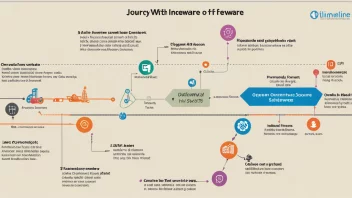Introduction
In this article, you will learn how to implement cryptographic hashing algorithms in smart water management systems utilizing cloud technology. We will explore the significance of hashing in ensuring data integrity, securing sensitive information, and enhancing the overall efficiency of water management solutions. By the end of this guide, you will have a clear understanding of the steps involved in integrating hashing mechanisms into your cloud-based applications.
Step 1: Understanding Cryptographic Hashing
Before diving into implementation, it's crucial to understand what cryptographic hashing is. A cryptographic hash function takes an input (or 'message') and produces a fixed-size string of bytes. The output is unique to each unique input, which means even a slight change in the input will produce a significantly different hash. Common hashing algorithms include SHA-256, SHA-3, and BLAKE2.
Why Use Hashing in Smart Water Management?
- Data Integrity: Hashing ensures that the data collected from sensors and systems has not been altered.
- Security: Sensitive data, such as customer information, can be stored securely without exposing it directly.
- Efficient Data Retrieval: Hashing allows for quick data lookups, essential for real-time water management.
Step 2: Choosing the Right Hashing Algorithm
For smart water management, selecting a suitable hashing algorithm is vital. SHA-256 is widely used due to its security and performance balance. Here’s how you can implement it:
Implementation Example in Python
import hashlib
def calculate_hash(data):
return hashlib.sha256(data.encode()).hexdigest()In this code snippet, we define a function that takes input data, encodes it, and returns its SHA-256 hash.
Step 3: Integrating Hashing into Cloud Applications
Once you have chosen your hashing algorithm, the next step is to integrate it into your cloud application. This process typically involves the following:
- Data Collection: Gather data from water sensors and systems.
- Hash Generation: Use the hashing function to generate a hash for the collected data.
- Data Storage: Store both the original data and its hash in your cloud database.
- Verification: Implement a mechanism to verify data integrity by recalculating the hash during data retrieval.
Implementation Example in Node.js
const crypto = require('crypto');
function calculateHash(data) {
return crypto.createHash('sha256').update(data).digest('hex');
}Step 4: Ensuring Data Integrity
To ensure data integrity in your smart water management system, follow these steps:
- Store Hashes: Keep the hashes generated in a secure database alongside the original data.
- Regular Verification: Regularly check data integrity by hashing stored data and comparing it to the saved hash.
- Alert System: Implement an alert system that notifies administrators in case of data discrepancies.
Step 5: Case Study on Cloud-Based Water Management
Let’s consider a case study of a cloud-based water management system that successfully implemented hashing:
The city of Springfield deployed a smart water management system that utilized SHA-256 hashing. They collected real-time data from water flow sensors and stored it in their cloud database. By hashing each data entry, they ensured that any unauthorized alterations would be easily detectable. The system included a dashboard for real-time monitoring and alerts for discrepancies, which improved overall efficiency.
Conclusion
In summary, implementing cryptographic hashing in smart water management systems enhances data integrity, security, and efficiency. By following the steps outlined in this guide, you can effectively integrate hashing into your cloud applications. Remember to choose a robust hashing algorithm, regularly verify data integrity, and stay vigilant for any unauthorized data changes. With these practices, your smart water management solution will be more secure and reliable.






